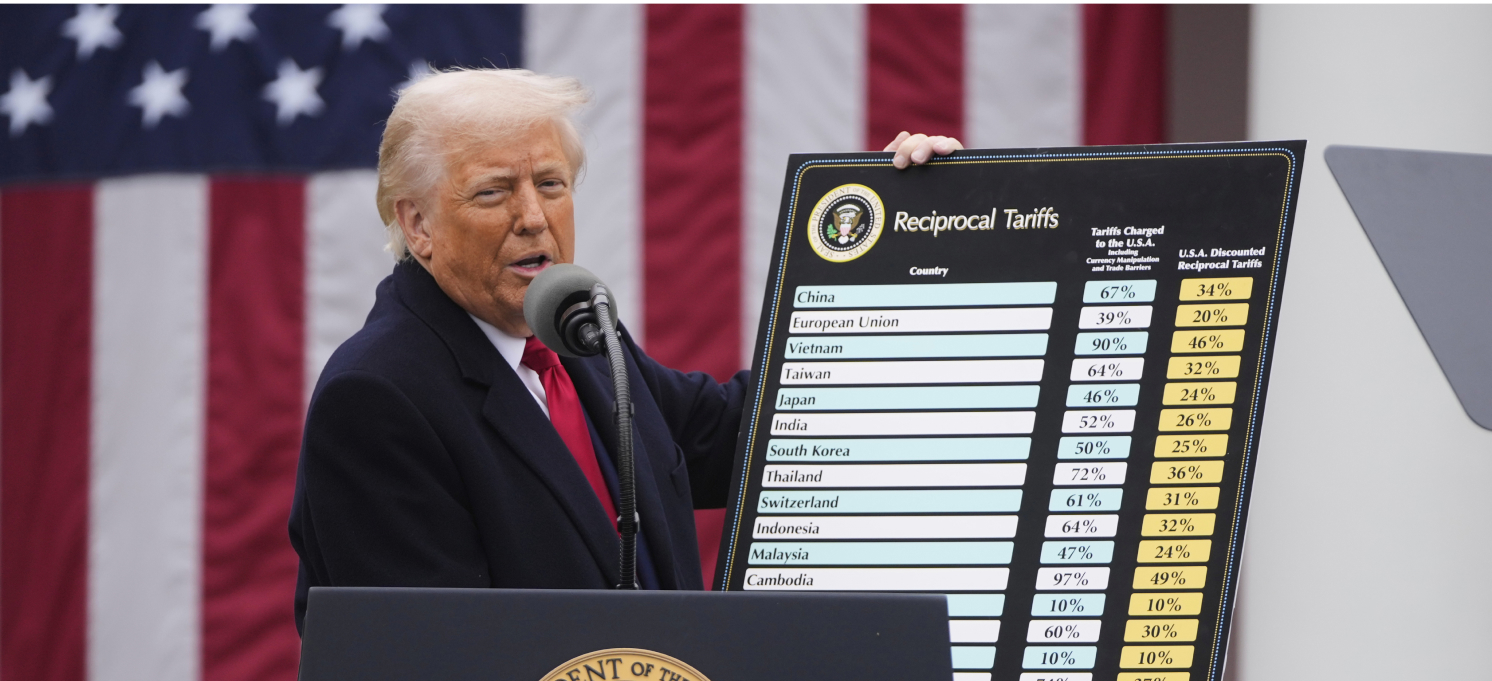
The rise of Russia’s foreign trade middlemen
Hello! Welcome to your weekly guide to the Russian economy—written by Alexandra Prokopenko and Alexander Kolyandr and brought to you by The Bell. Our top story this week is about the transformative effect Western financial sanctions are having on Russia’s foreign trade. We also look at why so few foreign companies are now leaving Russia.
Western financial sanctions warp Russian trade, banking
Western financial sanctions have become a bottleneck for Russian exports. In its efforts to maintain international trade, the Kremlin has relaxed regulations, allowing cash payments, crypto-currency, and legalized barter. Some schemes are now so widely-used that they’re even threatening the role of traditional banks in cross-border payments.
The rise of payment agents
Middlemen who organize cross-border payments for a commission are involved in up to 80% of cross-border payments, newspaper Vedomosti reported this week. Back at the start of the summer, before the West imposed sanctions on the Moscow Exchange and ramped up secondary sanctions on banks that serviced trade with Russia, such agents were involved in less than 20% of trade. But now there is no choice: it’s almost impossible to work with banks in third countries. “The risk of secondary sanctions had a largely paralyzing effect on Chinese banks,” a lawyer who specializes in international trade told Vedomosti.
These middlemen are companies, often affiliated with Russian exporters, who have offices in Russia and countries from which goods are delivered to Russia, such as Hong Kong, Kazakhstan or China. Russian importers who need to pay for goods from, say, China, transfer rubles to the agent, who then pays the supplier in China.
The fees on these transactions vary according to the sums involved, the geography and the product. They are usually up to about 8%. It can take anything from five days to three weeks for funds to be credited, one importer of construction materials told The Bell. This is quicker and easier than working with banks, but it’s more expensive.
Of course, bankers are unhappy with this development: banks with accounts abroad once earned good commissions on these sorts of payments. But, now, even large corporate clients are switching to middlemen.
It isn’t just the expense that is the problem for Russian companies using these sorts of get-arounds. There’s also a danger of fraud. “One time we found a good deal with a firm in Hong Kong, but the counterparty disappeared after we sent the money,” said The Bell’s source. Courts in China are ineffective, and it is almost impossible to get funds back. Typically, the victims of these scams are new, or small, businesses that either lack experience in external procurement, or cannot afford a specialist.
What’s the problem?
After the full-scale invasion of Ukraine, the West imposed sweeping sanctions on Russia, and almost all of Russia’s banks were disconnected from international payments system SWIFT. Instead, Russian companies switched to using China’s yuan. Until December last year, the yuan consistently accounted for about a third of Russian external trade settlements, with another third in rubles. At that time, the amount of yuan deposits held by companies and individuals in Russian banks had reached $68.7 billion (at the same time there was $64.7 billion in dollars), and there was an almost fourfold increase in yuan borrowing, largely due to the conversion of debt from dollars and euros. In 2023, the yuan accounted for 42% of turnover on the Moscow Exchange, outstripping the U.S. dollar.
However, in late 2023, United States President Joe Biden issued a decree on secondary sanctions that targeted banks in third countries if they were deemed to be assisting transactions for Russia’s defense sector. This greatly complicated foreign trade settlements. This summer, the U.S. struck again, sanctioning the Moscow Exchange and its subsidiaries, the National Clearing Center and Depository and boosting secondary sanctions.
Since then, even Russia’s Central Bank admits that problems with cross-border payments and logistics have had a restraining effect on Russian imports. And this problem will only deepen: import orders are made in advance, and the number of companies reporting payment problems is increasing.
Of course, it’s possible to bypass all these obstacles. For example by using payment agents as described above. But each new round of Western sanctions makes it more expensive to use a workaround. On Wednesday, the U.S. sanctioned more than 400 companies and individuals from Russia, China, India and Turkey that the U.S. Treasury believes are implicated in the supply of sanctioned goods to Russia.
Creating workarounds
At the moment, the most widely-used option for Russian companies to pay for Chinese imports is the Shanghai branch of Russia’s state-owned VTB bank. However, after Chinese banks started to refuse to work with Russian companies, VTB Shanghai faced a surge in demand for its banking services. There were queues of people wanting to open accounts, and there was a shortage of staff. The problems are less acute now, but, if payments are to proceed smoothly, it helps if the Chinese supplier also has an account with the Chinese branch of VTB. It’s not a perfect solution though: payments from VTB Shanghai (which is under U.S. sanctions) are not accepted by all banks in China.
China does not want to breach U.S. sanctions because the country’s financial system is still heavily reliant on the U.S. dollar and its largest state-owned financial institutions are closely entwined with the U.S. financial system. By some estimates, China holds up to half its foreign exchange reserves in U.S. dollars and the top four commercial Chinese state banks (the world’s four biggest commercial banks) rely on U.S. dollar funding.
It’s true that China has its own payment system – CIPS – which can make payments outside of SWIFT. But most fully-fledged participants in CIPS are Chinese subsidiaries of leading global banks, or offshore subsidiaries of Chinese banks. CIPS payments involving “indirect” participants (including Russian banks) are typically completed via SWIFT. Making an exception for sanctioned Russian banks would be very risky for other CIPS participants.
Many of these problems could be fixed if Russia’s trading partners agreed to settlements in their national currencies or created alternative payment platforms. At last week’s BRICS summit, there was a lot of talk about the weaponization of the U.S. dollar and its imminent collapse, but the idea of creating an alternative payment system using blockchain and digital currencies garnered little enthusiasm from anyone except Iran.
About 80% of global trade uses the U.S. dollar – even if the transaction does not involve U.S. goods. It’s simply better to be paid in a currency that you can use to purchase other goods. Countries with small markets find it easier to quote prices in U.S. dollars, significantly reducing risk. National currencies are harder to use. Chinese companies won’t trade with Turkey in Russian rubles, for example, and Russian companies won’t use Turkish lira to pay companies in India.
In addition, solving the problems linked to currency exchange and interest rate risks in cross-border operations between countries with widely differing monetary policies is extremely difficult. Some of them have currencies that are not fully convertible, and there are different restrictions on cross-border capital movements. Crucially, though, most of these countries simply don’t need such a “solution.” Here, Russia faces the classic dilemma that the fewer people who use something, the less useful it is for everyone.
Another workaround is barter – something Moscow and Beijing are actively discussing. But there is not yet any legislation in place, and this means it would be risky (in the first nine months of this year, bilateral trade between Russia and China reached $180.36 billion). These problems mean Russia spins small barter arrangements as big wins. Thus, news of a 20 tons of chickpeas exchanged for 20 tons of rice with Pakistan was widely reported.
Why the world should care
Financial sanctions are among the most effective measures taken by the West, and Russia has still not found a systemic solution to circumvent them. The flip side of these sanctions is the gradual fragmentation of the financial system. However, this is a slow process. The Kremlin's vision of "undermining the U.S. dollar" is still a long way off, and Russian companies will likely have to bear the additional costs caused by the sanctions for some time. For consumers, the impact is predictable: rising prices.
Foreign companies drag their feet on Russia exit
The Russian authorities have notched up some notable successes in their efforts to delay foreign companies from selling up and leaving the country. After rules on the sale of assets by foreigners were tightened, some Western companies have reportedly reneged on previously agreed deals. Russia has issued almost no permits for exit deals since spring.
- The government subcommittee that issues permits for companies from “unfriendly” countries to sell Russian assets hiked the required price discount from 50% to 60% in early October. At the same time, the “voluntary contribution” to the state went up from 15% to 35% of the market value of the assets. Formally, the “voluntary contribution” is paid by the buyer, however it is often priced into the deal. Thus, after selling its Russian business, a foreign company might now leave with just 5% of its value. The new rules affect all deals not yet approved by the subcommittee.
- The Russian authorities often say that they want companies from unfriendly countries to continue operations in the country. The reasons for this are political, as well as financial. Since the start of the war, foreign owners have been unable to withdraw profits in the form of dividends, which remain locked in special ruble accounts. According to a report from the Deposit Insurance Agency, which manages these accounts, there were 1.2 trillion rubles ($12 billion) in such accounts in December last year. That’s at least 20 times less than the Russian funds that were frozen in the West at the start of the war, but Russia has made it known that it is prepared to seize this money in response to any perceived attempt to seize its assets in the West.
- For the most part, shareholders in foreign companies cannot receive profits from Russian operations. They also cannot invest profits in expanding production. As a result, Russian assets do not generate profits – and only remain on the general list of assets. Companies that decided to write off their Russian assets have already lost $107 billion, Reuters calculated in March.
- More than 1,500 foreign companies remain in Russia, the Kyiv School of Economics claims. However, only about half of the companies are Western, many are not public, and some of them are nominally present but have ceased any activity.
- In early 2023, the flow of companies leaving Russia slowed to a trickle. Those that wanted to leave have already gone, and those that remain no longer face shareholder pressure to quit. As one CEO said in an FT interview in February: “investors are morally indifferent to whether companies stay in Russia.”
Why the world should care
It turns out that Western companies that left immediately after Russia invaded Ukraine – before discounts and “voluntary contributions” were a thing – made a wise decision. Over time, those who stayed are getting less and less out of their Russian businesses. Now, the only options are to sit out the current problems (more and more companies seem to be planning on this), or to find a buyer close to the Kremlin. And the latter is getting increasingly hard. Previously, Western sanctions meant a lot of money was locked in Russia. Now, there is less and less of this money and borrowing costs are rising.
Figures of the Week
At the end of September, international depositary Euroclear held frozen Russian assets worth €176 billion ($191 billion), according to a company report. It received €5.15 billion in the form of interest from reinvestment in the first nine months of this year.
State-owned Sberbank, Russia’s biggest bank, reported this week that the growth rate in consumer loans in the third quarter fell to a third of their level in the equivalent period last year. The increase was just 3.2%, with the decline blamed on high interest rates and tougher regulation. In the corporate lending sector, growth slowed slightly to 8.9% for the quarter, compared with 9.2% in the same period the year before.
Weekly inflation between Oct. 22 and Oct. 29 increased to 0.27% (compared with 0.2% the previous week), according to the State Statistics Service. Since the start of the year, inflation has increased 6.55%.
Further reading
Xi Jinping’s Axis of Losers. The Right Way to Thwart the New Autocratic Convergence
As Georgians Protest Election Results, What Next?



PAID SUBSCRIPTION LAUNCH
From May 1, 2025, The Bell in English will no longer be free
From May 1, 2025, all The Bell’s newsletters and online content will be behind a paywall. We have taken this decision so that The Bell can remain financially independent, and maintain our high standards of journalism and economic expertise





